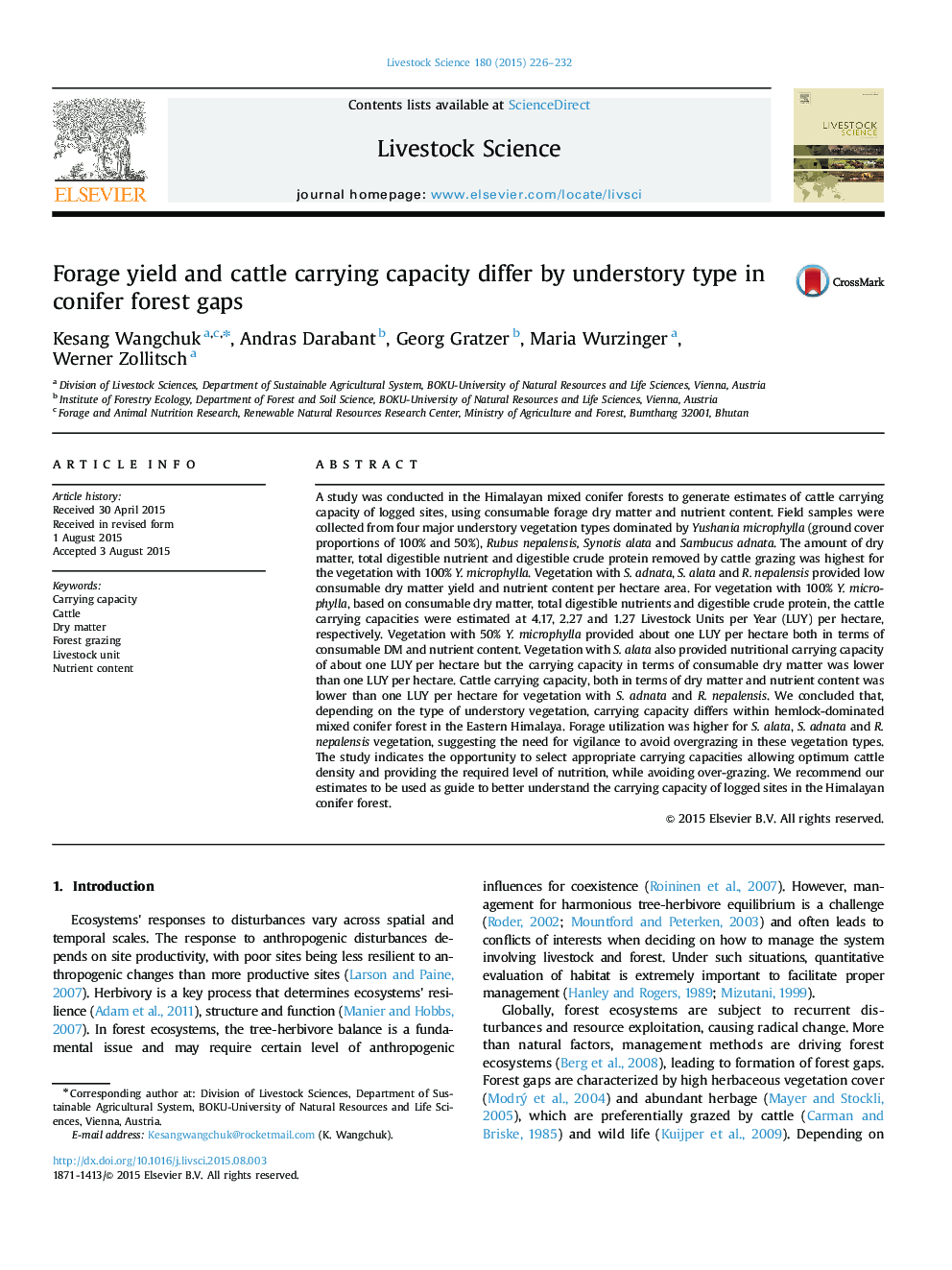| کد مقاله | کد نشریه | سال انتشار | مقاله انگلیسی | نسخه تمام متن |
|---|---|---|---|---|
| 2447044 | 1553952 | 2015 | 7 صفحه PDF | دانلود رایگان |
• Cattle carrying capacity differed according to understory vegetation types.
• Carrying capacities were highest for vegetation with 100% Y. microphylla.
• Carrying capacity was about one livestock unit yr−1 ha−1 for 50% Y. microphylla.
• Carrying capacity was lowest for S. alata, S. adnata and R. nepalensis vegetation.
A study was conducted in the Himalayan mixed conifer forests to generate estimates of cattle carrying capacity of logged sites, using consumable forage dry matter and nutrient content. Field samples were collected from four major understory vegetation types dominated by Yushania microphylla (ground cover proportions of 100% and 50%), Rubus nepalensis, Synotis alata and Sambucus adnata. The amount of dry matter, total digestible nutrient and digestible crude protein removed by cattle grazing was highest for the vegetation with 100% Y. microphylla. Vegetation with S. adnata, S. alata and R. nepalensis provided low consumable dry matter yield and nutrient content per hectare area. For vegetation with 100% Y. microphylla, based on consumable dry matter, total digestible nutrients and digestible crude protein, the cattle carrying capacities were estimated at 4.17, 2.27 and 1.27 Livestock Units per Year (LUY) per hectare, respectively. Vegetation with 50% Y. microphylla provided about one LUY per hectare both in terms of consumable DM and nutrient content. Vegetation with S. alata also provided nutritional carrying capacity of about one LUY per hectare but the carrying capacity in terms of consumable dry matter was lower than one LUY per hectare. Cattle carrying capacity, both in terms of dry matter and nutrient content was lower than one LUY per hectare for vegetation with S. adnata and R. nepalensis. We concluded that, depending on the type of understory vegetation, carrying capacity differs within hemlock-dominated mixed conifer forest in the Eastern Himalaya. Forage utilization was higher for S. alata, S. adnata and R. nepalensis vegetation, suggesting the need for vigilance to avoid overgrazing in these vegetation types. The study indicates the opportunity to select appropriate carrying capacities allowing optimum cattle density and providing the required level of nutrition, while avoiding over-grazing. We recommend our estimates to be used as guide to better understand the carrying capacity of logged sites in the Himalayan conifer forest.
Journal: Livestock Science - Volume 180, October 2015, Pages 226–232
